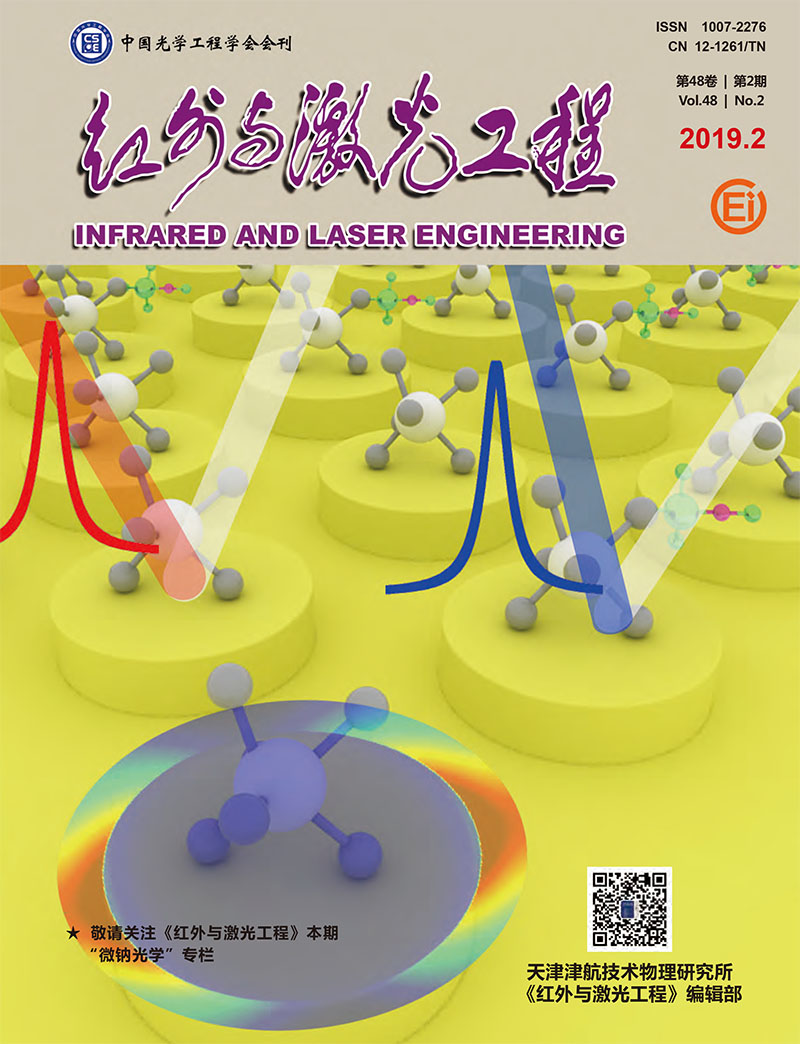|
[1]
|
Jin M C, Chen X L, Hao G H, et al. Research on quantum efficiency for reflection-mode InGaAs photocathodes with thin emission layer[J]. Applied Optics, 2015, 54(28):8332-8338. |
|
[2]
|
Yang M Z, Jin M C, Chang B K. Spectral response of InGaAs photocathodes with different emission layers[J]. Applied Optics, 2016, 55(31):8732-8737. |
|
[3]
|
Matsuyama T, Mukai M, Horinaka H, et al. High luminescence polarization of InGaAs-AlGaAs strained layer superlattice fabricated as a photocathode of spin-polarized electron source[J]. Japanese Journal of Applied Physics Part 1-Regular Papers Short Notes Review Papers, 2001, 40(11):6468-6472. |
|
[4]
|
Yang M Z, Jin M C. Photoemission of reflection-mode InGaAs photocathodes after Cs,O activation and recaesiations[J]. Optical Materials, 2016, 62:499-504. |
|
[5]
|
Smirnov K, Medzakovskiy V I, Davydov V V, et al. High sensitive InP emitter for InP/InGaAs heterostructures[J]. Journal of Physics:Conference Series, 2017, 917(6):062019. |
|
[6]
|
Sachno V, Dolgyh A, Loctionov V. Image intensifier tube (I2) with 1.06-m InGaAs-photocathode[C]//SPIE, 2005, 5834:169-176. |
|
[7]
|
Escher J S, Gregory P E, Hyder S B, et al. Transferred-electron photoemission to 1.65m from InGaAs[J]. Journal of Applied Physics, 1978, 49(4):2591-2592. |
|
[8]
|
Li Jinmin, Guo Lihui, Hou Xun. Theoretical calculation of quantum efficiency for field-assisted InP/InGaAsP semiconductor photocathodes[J]. Acta Physica Sinica, 1992, 41(10):1672-1678. (in Chinese) |
|
[9]
|
Jin M C, Chang B K, Cheng H C, et al. Research on quantum efficiency of transmission-mode InGaAs photocathode[J]. Optik, 2014, 125(10):2395-2399. |
|
[10]
|
Li Jinmin, Guo Lihui, Hou Xun. Calculation of time response for field-assisted InP/InGaAsP/InP semiconductor photocathodes[J]. Chinese Science Bulletin, 1992, 37(7):598-601. (in Chinese) |
|
[11]
|
Sun Qiaoxia, Xu Xiangyan, An Yingbo, et al. Numerical study on time response characteristics of InP/InGaAs/InP infrared photocathode[J]. Infrared and Laser Engineering, 2013, 42(12):3163-3167. (in Chinese) |
|
[12]
|
Zou Jijun, Chang Benkang, Yang Zhi. Theoretical calculation of quantum yield for exponential-doping GaAs photocathodes[J]. Acta Physica Sinica, 2007, 56(5):2992-2997. |
|
[13]
|
Escher J S, Gregory P E, Maloney T J. Hot-electron attenuation length in Ag/InP Schottky barriers[J]. Journal of Vacuum Science and Technology, 1979, 16(5):1394-1397. |
|
[14]
|
Su C Y, Spicer W E, Lindau I. Photoelectron spectroscopic determination of the structure of (Cs,O) activated GaAs (110) surfaces[J]. Journal of Applied Physics, 1983, 54(3):1413-1422. |
|
[15]
|
Levinshtein M, Rumyantsev S, Shur M. Handbook Series on Semiconductor Parameters[M]. 2nd ed. London:World Scientific, 1999:62-88. |
|
[16]
|
Simon S M. Physics of Semiconductor Devices[M]. New York:Wiley, 1980. |
|
[17]
|
Levinshtein M, Rumyantsev S, Shur M. Handbook Series on Semiconductor Parameters[M]. 1st ed. London:World Scientific, 1999. |
|
[18]
|
Jiao Gangcheng, Xu Xiaobing, Zhang Liandong, et al. InGaAs/InP photocathode grown by solid-source MBE[C]//SPIE, 2013, 8912:891216. |
|
[19]
|
Chinen Kouyu, Minoru Niigaki, Masahiro Miyao, et al. GaAs transmission photocathode grown by MBE[J]. Japanese Journal of Applied Physics, 1980, 19(11):703-706. |
|
[20]
|
Narayanan A A, Fisher D G. Negative electron affinity gallium arsenide photocathode grown by MBE[J]. Appl Phys, 1984, 56(6):1886-1887. |
|
[21]
|
Bourree L E, Chasse D R, Thamban P L, et al. MBE grown InGaAs photocathodes[C]//SPIE, 2003, 4796:1-10. |
|
[22]
|
Jin M C, Chang B K, Guo J, et al. Theoretical study on electronic and optical properties of Zn-doped In0.25Ga0.75As photocathodes[J]. Optical Review, 2016, 23(1):84-91. |
|
[23]
|
Guo Jing, Chang Benkang, Wang Honggang, et al. Near-infrared photocathode In0.53Ga0.47As doped with zinc:A first principle study[J]. Optik, 2016, 127(3):1268-1271. |









 DownLoad:
DownLoad: